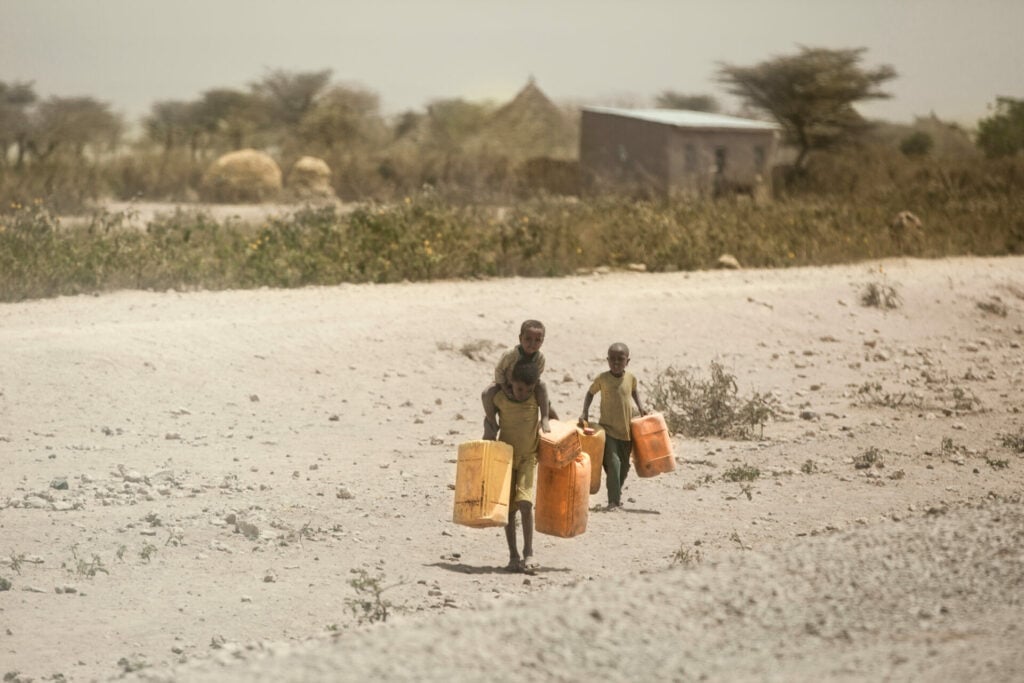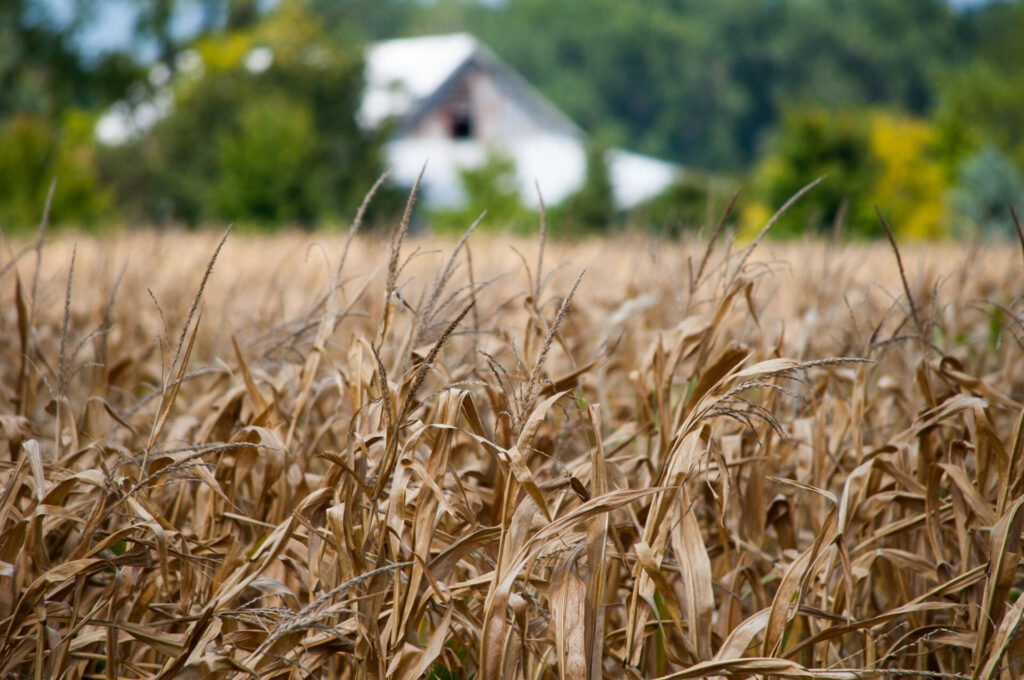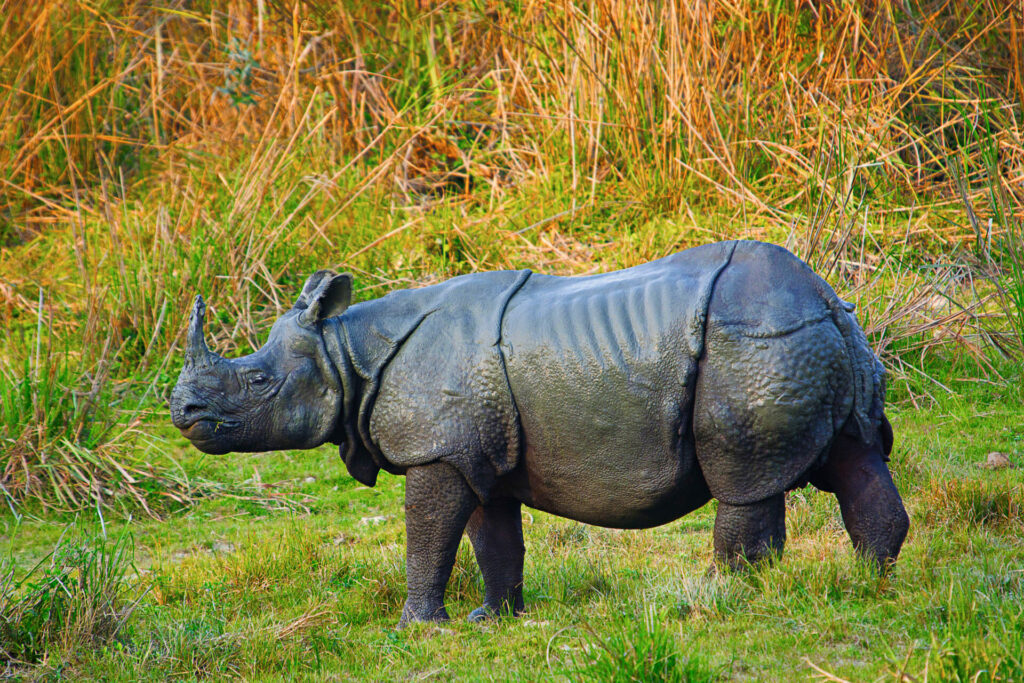A new United Nations report claims more than 75 per cent of the world could face drought by 2050 and that we must find ways of slowing it down ‘urgently, using every tool we can.’
The study, which says more than 100 countries will face increased shortages of water in coming decades, points to the climate crisis for making droughts more frequent and longer-lasting.
Drought in Numbers, 2022 was released at the UN Convention to Combat Desertification during the 15th Conference of Parties (COP15), which took place in Abijan, Côte d’Ivoire.
‘We are at a crossroads,’ said UNCCD Executive Secretary Ibrahim Thiaw. ‘We need to steer toward the solutions rather than continuing with destructive actions, believing that marginal change can heal systemic failure.’
If no action is taken…one in four children will live in areas with extreme water shortages by 2040
Drought in Numbers, 2022
Climate change is expected to increase the risk of droughts in many regions of the world, particularly those with rapid population growth, vulnerable populations and challenges with food security, according to the report, which estimated 129 countries will experience an increase in water shortages over coming decades.
If no action is taken an estimated 700 million people will be at risk of being displaced by drought by 2030 and one in four children will live in areas with extreme water shortages by 2040.
By the mid-century, more than 75 per cent of the world’s population will be affected by droughts with an estimated 4.8-5.7 billion living in areas that are water-scarce for at least one month each year.

Mr Thiaw said: ‘The facts and figures of this publication all point in the same direction: an upward trajectory in the duration of droughts and the severity of impacts, not only affecting human societies but also the ecological systems upon which the survival of all life depends, including that of our own species.’
The report concluded that drought frequency and duration has already increased by 29 per cent since 2000.
The Silent Killer
Droughts were also the deadliest natural disaster on a global scale. Although they only represent 15 per cent of natural disasters, they killed 650,000 people between 1970 and 2019. Between 1998 and 2017, the global economy lost around $124bn due to drought.
Should global warming reach 3C by 2100, drought losses could be five times higher than they are today, with the largest increase in the Mediterranean and the Atlantic regions of Europe
Africa has suffered the most, experiencing 134 recorded droughts in the last 100 years. More than half of them were in East Africa, which is in the midst of a devastating drought right now where currently 16 million people in the Horn of Africa are food insecure.
India, Australia and the Americas also struggled with drought. In the US, the economy has lost $249bn due to drought and related crop failures since 1980.

Globally, an estimated 2.3 billion people currently face water shortages, which is about a third of the world’s population.
And should global warming reach 3C by 2100, drought losses could be five times higher than they are today, with the largest increase in the Mediterranean and the Atlantic regions of Europe.
Not Just A Water Problem
The issue has a particular impact on women in developing countries second only to flooding, in terms of education, nutrition, health, sanitation, and safety.
The report explained that 72 per cent of women and nine per cent of girls are burdened with collecting water, in some cases spending as much as 40 per cent of their calorific intake carrying it.
Ecosystems are also put at risk, said the report. The percentage of plants affected by drought has more than doubled in the last 40 years – with about 12 million hectares of land lost each year to drought and desertification.
Water shortages are becoming increasingly common in the Amazon region, which has suffered three widespread droughts that triggered massive forest fires throughout the first two decades of this century.
If Amazonian deforestation continues unabated, 16 per cent of the region’s remaining forests will likely burn by 2050, warned the report.

Mr Thiaw said there has to be a shift away from reactive emergency response approaches towards proactive planning involving communication and co-ordination, backed by both financial commitments and political will.
‘We must build and rebuild our landscapes better, mimicking nature wherever possible and creating functional ecological systems,’ he said.
‘One of the best, most comprehensive solutions, is land restoration, which addresses many of the underlying factors of degraded water cycles and the loss of soil fertility.’













